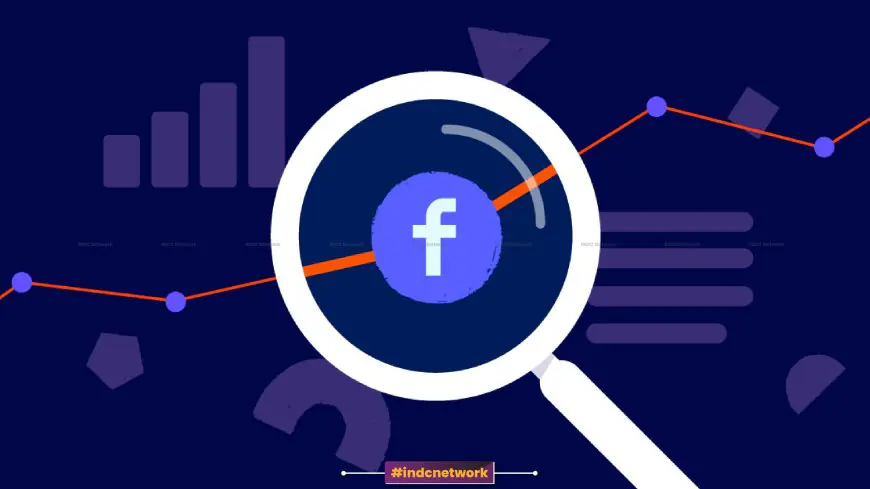Unmasking the Facebook Algorithm: Why Your Organic Reach is Fading Faster Than You Realize : In the early 2010s, Facebook was a digital paradise for businesses and creators. You could post content, engage with followers, and see your brand or page grow rapidly without spending a cent. However, fast forward to the present day, and the situation looks vastly different. Organic reach — the number of people who see your content without any paid promotion — has dramatically plummeted. Brands and creators are left wondering why their posts are barely reaching even a fraction of their audience. This isn't an isolated experience but a global trend.
The blame for this lies in Facebook's ever-evolving algorithm, which has made it increasingly difficult for organic content to thrive. But what exactly is happening behind the scenes? Why has Facebook chosen to stifle organic reach, and what can creators and businesses do to survive in this hostile environment? In this comprehensive article, we’ll decode Facebook’s algorithm, explore the key factors causing this shift, and offer strategic insights to help you adapt.
The Early Days: A Golden Era for Organic Reach : When Facebook first launched its Pages feature for businesses in 2007, it was a game-changer. Brands, small businesses, and creators could suddenly engage directly with millions of users without relying on expensive traditional advertising methods. Organic reach on Facebook was high, and businesses saw great results just by posting content regularly.
However, this period of wide-open visibility didn't last long. As Facebook's user base grew and more brands flooded the platform, competition for attention became fierce. Facebook, being a business itself, had to manage the volume of content users were seeing on their News Feeds.
This growing saturation led to the creation of the Facebook algorithm — a system designed to prioritize content and decide what users see. Initially, the algorithm favored relevance, meaning posts that generated a lot of interaction (likes, comments, shares) were given priority.
Facebook’s Algorithm Evolution: A Timeline of Decline for Organic Reach : Understanding the decline in organic reach requires a closer look at how Facebook’s algorithm has evolved over the years. Below is a rough timeline of major algorithm updates and their impact:
1. 2013 - The Introduction of the First Algorithm (EdgeRank) Facebook’s original algorithm, EdgeRank, was introduced in the early 2010s to manage the overwhelming influx of content. EdgeRank prioritized content that was relevant to the user based on three factors:
- Affinity (your relationship with the user)
- Weight (the importance of the interaction)
- Decay (the timeliness of the post)
While EdgeRank helped users avoid information overload, it marked the beginning of reduced organic reach for pages.
2. 2015 - Video Takes the Lead In 2015, Facebook made a major push for native video content. Videos that were uploaded directly to Facebook were prioritized over external links (such as YouTube videos). Creators who adopted this strategy saw a temporary resurgence in organic reach.
3. 2016 - Personal Content Over Branded Content The algorithm was updated to favor personal content from friends and family over posts from businesses and public pages. Facebook CEO Mark Zuckerberg emphasized that this move was to keep Facebook a place for meaningful social interactions rather than an endless stream of promotional content.
4. 2018 - “Meaningful Interactions” Update The most significant change to date came in 2018 when Zuckerberg announced that Facebook would be prioritizing “meaningful interactions” over passive content consumption. Posts from friends, family, and groups were given precedence, while organic reach for business pages saw an unprecedented drop. The rationale was that Facebook wanted to focus on fostering personal connections, but the consequence for businesses was brutal. Organic reach dropped to an all-time low of around 2-6%.
5. 2020 - Facebook Embraces Pay-to-Play By 2020, it became clear that Facebook was fully embracing a pay-to-play model. Boosted posts and ad campaigns became almost essential for brands to maintain visibility on the platform. Facebook’s advertising business boomed, but organic reach continued its freefall.
The Anatomy of the Facebook Algorithm : At its core, Facebook’s algorithm is a complex machine-learning system that prioritizes content based on user behavior, relevance, and engagement potential. While the exact mechanics are proprietary, the key factors influencing reach include:
-
Engagement: Posts that receive quick and high engagement (likes, comments, shares) are more likely to appear in News Feeds. This is because Facebook’s algorithm interprets engagement as a signal that the content is valuable.
-
Relevance: The algorithm looks at the relationship between the poster and the viewer. If a user frequently interacts with a specific page or person, they are more likely to see future posts from that source.
-
Content-Type: Facebook prioritizes different types of content based on its current objectives. For example, native video content has historically received a boost, and more recently, Facebook has pushed its Stories and Reels formats to compete with Instagram and TikTok.
-
Timeliness: Newer posts are prioritized over older ones, although high engagement can keep older posts visible for longer.
-
Historical Performance: If a page’s previous posts performed well, future posts are more likely to be seen. This means that once your organic reach declines, it can be difficult to recover.
Why Organic Reach Is Declining : There are several key reasons behind the dramatic decline in organic reach on Facebook for creators and businesses:
1. Algorithm Prioritization of Personal Content : Facebook's mission has shifted over time from connecting people with content to connecting people with other people. This led to a sharp reduction in visibility for business pages. The focus on personal connections meant that posts from family, friends, and close connections were prioritized, pushing brand content further down in the feed.
2. Content Saturation : With over 2.9 billion monthly active users, Facebook has become an incredibly crowded space. Millions of posts are generated every minute, and there’s simply too much content for users to consume. Facebook’s algorithm must sift through this vast pool and determine what to show to whom, which means less room for unpaid content from businesses.
3. Facebook’s Business Model : Let’s not forget that Facebook is a for-profit company, and a huge part of its revenue comes from advertising. By limiting organic reach, Facebook forces businesses to pay for boosted posts and ads to stay visible. This shift to a pay-to-play model ensures that Facebook continues to grow its advertising revenue.
4. Increased Competition from Other Platforms : Facebook faces stiff competition from platforms like Instagram, TikTok, and YouTube. In response, it has been aggressively promoting newer features like Stories and Reels, which are given priority in the algorithm. For creators and businesses sticking to traditional posts, this means even less organic reach.
5. Engagement Is King : As Facebook focuses more on meaningful interactions, content that doesn’t generate high engagement quickly falls out of view. Passive content or posts that don’t encourage interaction struggle to reach a broader audience.
6. Pay-to-Play Dominance : Organic reach is no longer enough to keep most pages relevant on Facebook. The platform’s revenue model has become heavily dependent on advertising, meaning that the companies willing to invest in ads see greater reach. Facebook’s algorithm is designed to push brands toward paid promotions, ensuring that businesses have to spend to stay visible.
How Creators and Businesses Can Adapt to the Decline : The decline in organic reach doesn’t mean that success on Facebook is impossible — it just means that creators and businesses need to adapt to the new reality. Here are some strategies that can help:
1. Invest in Facebook Ads : While it might seem frustrating to pay for visibility, Facebook ads can be a highly effective way to reach a targeted audience. Boosting posts or running ad campaigns can ensure your content gets the exposure it needs.
2. Focus on Engagement : Creating content that encourages meaningful interaction is critical. Facebook’s algorithm rewards posts that generate likes, comments, and shares, so focus on asking questions, creating polls, and prompting discussion in your posts.
3. Leverage Facebook Groups : Facebook has shifted its focus towards fostering communities, which means Groups now have significantly higher reach than business pages. Creating or actively participating in Facebook Groups relevant to your niche can help you connect with your audience on a more personal level.
4. Diversify Content : Facebook has been heavily promoting new features like Stories and Reels, so creators and businesses should consider incorporating these formats into their content strategy. Additionally, native video content remains one of the most effective formats for reaching a broad audience.
5. Utilize Facebook Insights : Facebook’s analytics tools provide valuable information on what type of content resonates with your audience. By analyzing what works and what doesn’t, you can optimize future content to increase engagement and reach.
6. Experiment with Content Timing : Posting at the right time can make a big difference. Use insights from your page’s analytics to determine when your audience is most active and post during those peak times.
7. Cross-Promote on Other Platforms : With the decline of organic reach on Facebook, it’s wise not to put all your eggs in one basket. Cross-promoting your content on Instagram, LinkedIn, or Twitter can help you reach a broader audience and reduce your dependence on any single platform.
The Future of Organic Reach on Facebook : The downward trend in organic reach is unlikely to reverse anytime soon. In fact, as Facebook continues to prioritize ads and personal content, organic reach may continue to shrink. The platform is now primarily a pay-to-play environment for businesses and creators, and anyone hoping to thrive on Facebook must accept this reality.
However, with smart strategies, creative content, and a willingness to experiment, businesses and creators can still find success. The key is to stay adaptable, leverage new features, and remain focused on fostering genuine engagement with your audience.
Conclusion : The Facebook algorithm’s constant evolution has created a challenging environment for creators and businesses seeking organic reach. While it might feel like the deck is stacked against you, understanding how the algorithm works and adapting your strategy can still yield strong results. By focusing on engagement, leveraging new content formats, and accepting the necessity of paid promotions, you can maintain visibility in a rapidly changing digital landscape. The days of easy, free reach are gone — but with the right approach, your content can still shine.














































































































































































